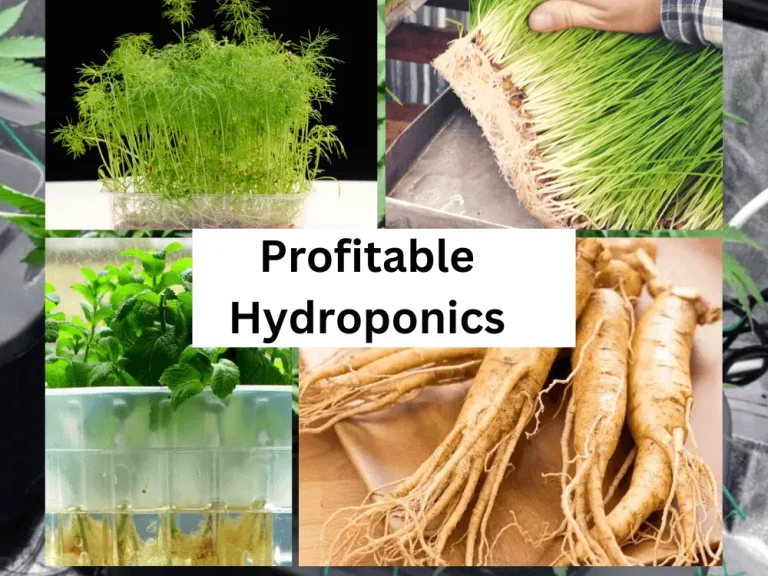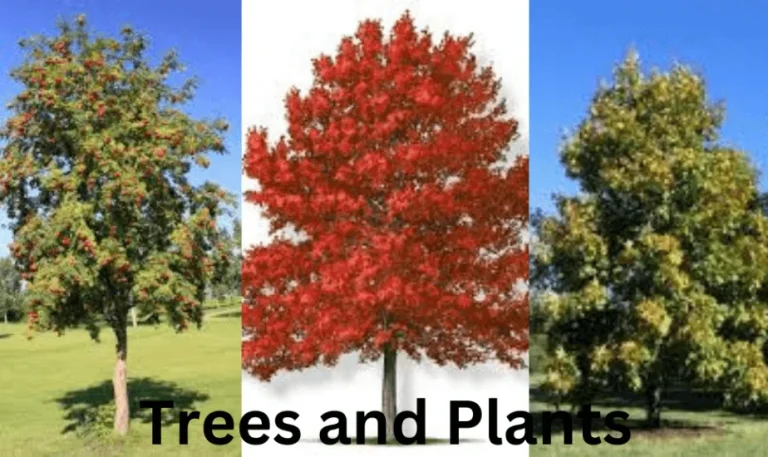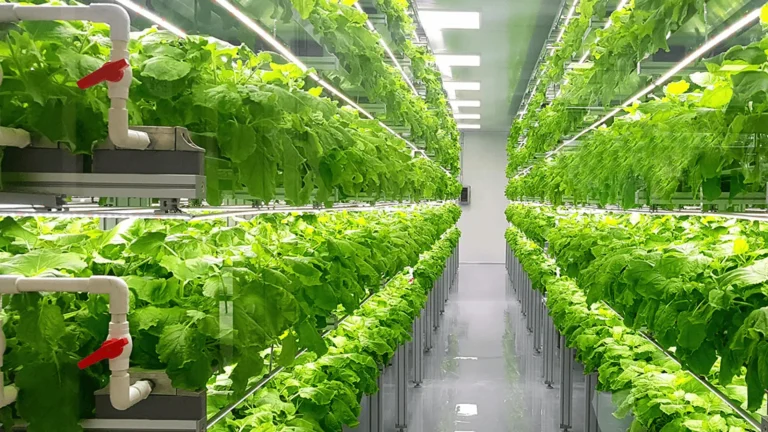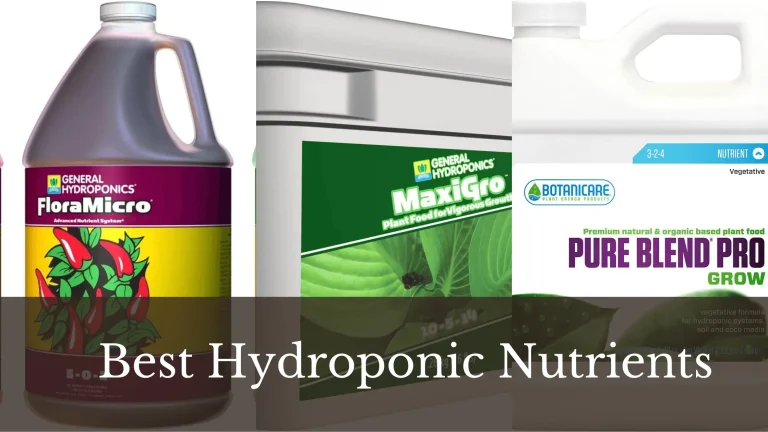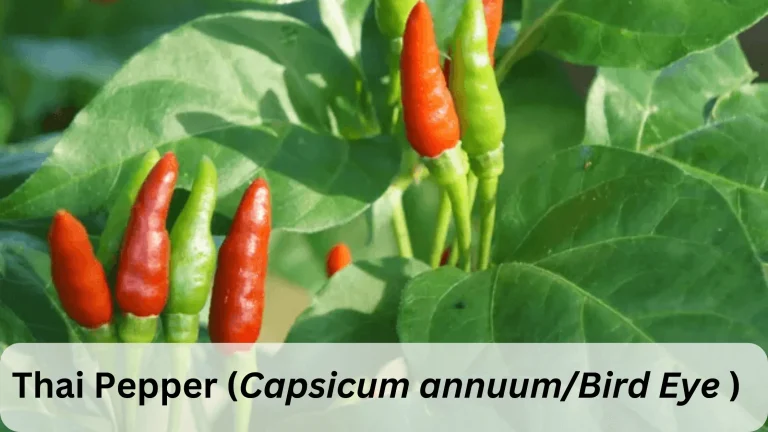Vinca Vine (Variegated Vinca) | Types, Why and How to Grow and Care
Vinca vine (Vinca major) is also known as “Variegated Vinca” and “Periwinkle” due to their attractive and variegated foliage. These big leaf periwinkles have variegated leaf margins, making them beautiful. The central part of the leaves is green with edges in different colors ranging from white to purple, brown, or red. Sometimes, there are visible patches like the brush strokes, making it striking and aesthetic.
Vinca Vine has blue or purple flowers, along with leaves and patches to attract. They bloom in spring and remain there till late spring. These flowers are round-shaped with five or multiple five petals. Green and variegated leaves remain on the plant throughout the year, while flowers appear only in spring yearly. You can observe the same in Caladium Fiesta and Variegated Hostas.
With the trailing stem, it is one of the fast-growing vines with Lavender to dark blue flowers. The variegated foliage with striking flowers is a good contrast for the people. These flowers appear on the vine periodically throughout the growing season.
Alert
You can grow it as a house plant, but their leaves are toxic to pets.
Basic Information about Vinca Vine Plant
The following table summarizes all the related information;
| Scientific Name | Vinca major (Genus: Vinca; Species: major) |
| Common Name / English Name | Major Periwinkle (bigleaf Periwinkle, Large Periwinkle, Blue Periwinkle), Maculata |
| Family | Apocynaceae / Dogbane |
| Propagation | Stem Cutting / Seeds |
| Plant Type | Herbaceous, Annual, Vine, Ground Cover, Evergreen broadleaf, Creeping |
| Fruit | Cylindrical Capsule (2 inches) with 4-5 seeds |
| Leaves | Green, Broad, ovate, 2.5-3 inches long and 1 inch wide |
| Stem | Green or Brown |
| Life Cycle | Perennial |
| Size | 6-8 Inches tall – 12-24 inches wide |
| Soil Requirements | Moist well-drained with acidic pH (5.5-6.5) |
| Light Requirement | 6-8 hours daylight |
| Hardiness Zone | USDA 7-9 (United States Department of Agriculture) |
| Bloom Time and Colour | Spring / Blue or Purple |
| Uses | Indoor (bedrooms), hanging Vinca Vine baskets and boxes near windows. |
Types of Vinca Variegata
Vinca Vine has some striking species.
Vinca Rosea:
These cultivars are related to the rose in shape, scent, and fragrance. They bloom quite beautifully in early spring.

Vonca Rose
Vinca Minor
This variety is less invasive and rarely seen. They are spread in nature and produce white to purple flowers.

Vinca Minor
Vinca Major
This species is invasive and dominant. The foliage is green and broadleaf. It grows all types of flowers with all possible colors.

Vinca Major
How do you Properly Propagate Vinca Vines?
These Vines are propagated and Grown through stem cuttings and seeds.
Through stem cuttings?
Variegated Vinca can be propagated through stem cutting. See the following steps to get a successful plant through this vegetative means of propagation.
- Select a healthy stem with no flowers on it.
- Remove all the leaves.
- Dip cutting in rooting hormone (GA3 or Cytokines) for 5-10 minutes.
- Take the cuttings from the rooting medium and bury them in a soil medium with peat. Compost, perlite, or any other organic matter. Cover it with 0.5 inches of soil to start root emergence.
- Rinse the container and cover it with a plastic bag.
- Place the container in the shade.
- Keep the soil moist with water spray.
- Root growth will start in 3-5 days.
- Transplant it in the field (outdoor) or the larger container (indoor) after 14-21 days.
Through Seeds
You can grow Bigleaf Periwinkle through seeds as well.
- Collect healthy seeds from the seed pods.
- Let them completely dry in the sun for 12-15 weeks.
- Save them in a closed container and place them in the dark to halt any process.
- The sowing time is spring; place the seeds in well-drained, fertile soil containers. You may also use growing media like formula soil. Cover the seeds.
- Moist the soil regularly and keep the temperature at about 70-75°F.
- The seedlings will emerge after three weeks.
- Transplant this seedling to the desired indoor or outdoor place.
What are the 9 Reasons to Grow Vinca Vines?
Vinca vines are the best addition to any garden. I have personal experience of growing them. I love it being less care-intensive and resistant to pets and Deer. Moreover, I’ll list eight reasons you should grow it in your garden.
- Low Budget Plant – You can get this garden friend for 5-7 dollars. You can even get the stems and cuttings to grow if a gardener is pruning it.
- Rapid Growth – These are hard annual plants. They grow well and show aggressive growth every summer. This behavior marks it as an invasive species.
- Shade Resistant – They can grow well in shade and indirect sunlight. However, please place them in partial sun to get their full potential.
- Less Care Intensive – Once they are established, there is no need to care much about the vines. Regular showers in the well-drained soil keep them good.
- Easy to Transplant – You can get them free from the cuttings and pruning. You can easily move them away from the parent plants by transplantation.
- Variegated Colours – They bloom in different shades. Their shade varies from white to pink to purple, and so on.
- Attractive for Birds and Butterflies – As they are varied, so do they attract colorful butterflies. They are also the place to visit for hummingbirds.
- Resistant to Deer and rabbits – You need not worry about the herbivores. They are resistant to deer and other wild animals.
- Frost Tolerant – In fall, you need to maintain a good frequency of water and add organic matter to keep the root zone warm. By doing this, it can tolerate frost.
How to care for Variegated Vinca?
These vines do not have intensive care requirements like Thai Pepper. It can thrive in various environments and hardiness zones (7a, 7b, 8a, 8b, 9a, and 9b). It is resistant to drought, erosion, dry soil, and shade. It makes it easy for the gardeners to grow and have it on their list. However, it is poisonous and toxic for pets (cats and dogs) as its stem contains poisonous milky latex and is thus deer-resistant.
All this happens outside in an open garden, where it grows aggressively and is known as an “invasive species.” It spreads out potentially and covers the ground. However, it is quite manageable in indoor conditions.
1. Light
As it aggressively grows outdoors, it loves to grow in direct sunlight. In partial sunlight, its growth becomes controlled and slow. Full sun may also cause drought and dry conditions, but it is resistant to all such conditions. Moreover, due to its aggressive growth, it requires trimming and cutting to give it shape.
2. Soil
Bigleaf periwinkle loves to be grown in well-drained, moist soil, yet adding organic matter will add fertility to it and enhance extensive growth. Add peat moss for its propagation through vegetative parts and cover the roots for good anchoring.
3. Water
Plants can withstand drought (drought tolerant) and dry conditions so that you can water twice a week. However, at the time of early establishment, well-drained soil was frequently irrigated. Apply water only closer to the root zone (4-6 inches from the plant base).
Hand watering with the sprinkler is a better option. The irrigation time should be early morning, so water on the leaves may evaporate in the sun. Otherwise, there is a higher chance of getting molds.
When to apply the water is quite interesting. There is a simple way to check the status of the soil manually. You can check it with your finger. Dig the soil 2-4 inches. If it is dry, it is time to apply water.
Note
The plant spreads naturally; apply water to the roots, not the foliage, to avoid mold attack.
4. Fertilizer
If you have added peat compost or other organic amendments, adding more fertilizers is unnecessary. However, if the soil is light, you can apply NPK at the ratio of 10:10:10. Application time should be before the start of the spring. At this time, fertilizers will enhance blooming.
5. Colder Temperature
Vinca Vine can grow indoors and outside in the courtyard as well. However, it is better to shift these pots to a room or cover them with plastic before the start of the forest. If you want to keep them outdoors, cover the soil with compost, straw, wood chips, and other composts to insulate and keep the soil warm. Apply fresh water and avoid using stored cold water; otherwise, roots may get damaged.
Alert
Apply fertilizer to the root area only. Fertilizers on the leaf surface may cause leaf scorch.
6. Pruning
Here, you can prune leaves and flowers to give aesthetic shape and get controlled seed production. Pinch off wilted flowers and leaves. It has extensive growth in spring and early summer. Pruning and pinching off at this time will be quite helpful. Deadheading is not necessary here. This will maintain shape and help in aeration, light exposure, lessening disease attacks, and better growth.
What are the common pests and diseases of Variegated Vinca?
Optimum care conditions are required for growing Bigleaf periwinkle. If the conditions are not followed, it may fall prey to diseases.
Common insects: Spider mites, Whiteflies, Aphids, Scales
Treatment: Intertidal Soap, neem Oil
Diseases: Leaf blight, leaf spots, phytophthora blight
Treatment: You can use the precautions. Avoid over-watering, give proper light exposure if damage is high, and remove the plant.
Curling of the leaves: The vine leaves may be discolored and curled inward in nutrient-deficient soil. The curled part may have black spots as well.
Treatment: Test the fertility status of your soil and apply balanced fertilizers accordingly.
Yellowing of leaves: If the soil is alkaline and deficient in iron, the plant may suffer from yellowing.
Treatment: There is a need to use iron-fortified fertilizers. You can also use calcium to amend the pH of the soil. Ample water may also help lower the pH, but it will trigger the attack of molds, so avoid using this strategy.
Conclusion
Vinca Vine is attractive due to its variegated foliage and flowers. Flower color ranges from white to pink and purple. There are three common types; V. Major, V. Mino, and V. Rosea. They are perennial, frost and drought-resistant. Moreover, they are resistant to herbivores and poisonous to pets. Place them in Hanging baskets and boxes for 6-8 hours day light. They can grow up to 8 inches and spread to cover the ground surface. These vines can propagate through cuttings and seeds. They require optimum light, water, fertilizer, temperature, and well-drained fertile soil.
FAQs
How does Vinca Vine Maculata spread as a creeper and cover the ground?
The vine can grow 6-8 inches long and spread everywhere. It can completely cover the ground area.
What is the difference between Vinca Major and Vinca Minor?
As the name shows, the difference between the two varieties is the size and the color of the foliage and flowers.
Vinca Minor: Small in size with Blue colored flowers and dark green foliage.
Vinca Major: Big in size with whiteish-yellow flowers and light green foliage.
What is the difference between Greater Periwinkle and Madagascar Periwinkle?
Greater Periwinkle is cold, hard, and larger, while Madagascar periwinkle is an annual bedding plant that grows outdoors always.
Is the Vinca plant Perennial or annual?
It is a fast-growing perennial. It requires attention to control its spread as it is an invasive species.
Do they grow well in shade?
It can grow well in partial sun or indirect light. However, they survive in the shade as well, but for aggressive growth, place the pot in the sun for 6 – 8 hours a day.
How do I get rid of Vinca from my garden?
These are invasive with aggressive growth patterns. If you are tired of it and want to eliminate these vines, uproot them before flowering and seed formation.
Is variegated Vinca toxic to cats and dogs?
The vine is toxic to all pets, including cats and dogs. It is poisonous to herbivores like Deer and rabbits as well.
What are the benefits of having an artificial Vinca Vine?
The vines are less Care-intensive; however, if you are busy enough and can’t manage these, you can buy artificial vines for aesthetic value and climb them on the pillars and walls.
I’m Dr Qaiser Maqsood (PhD), a dedicated researcher and expert in Biological Sciences, Gardening, Bio-Diversity, Ecology, and Environmental Sciences. I’m much concerned about Environmental Pollution, Climate Change, Plantation, Gardening, and Global Warming. My passion is to explore innovative solutions in all these fields.
Be aware that we have ONLY ONE EARTH. Protect it!!

